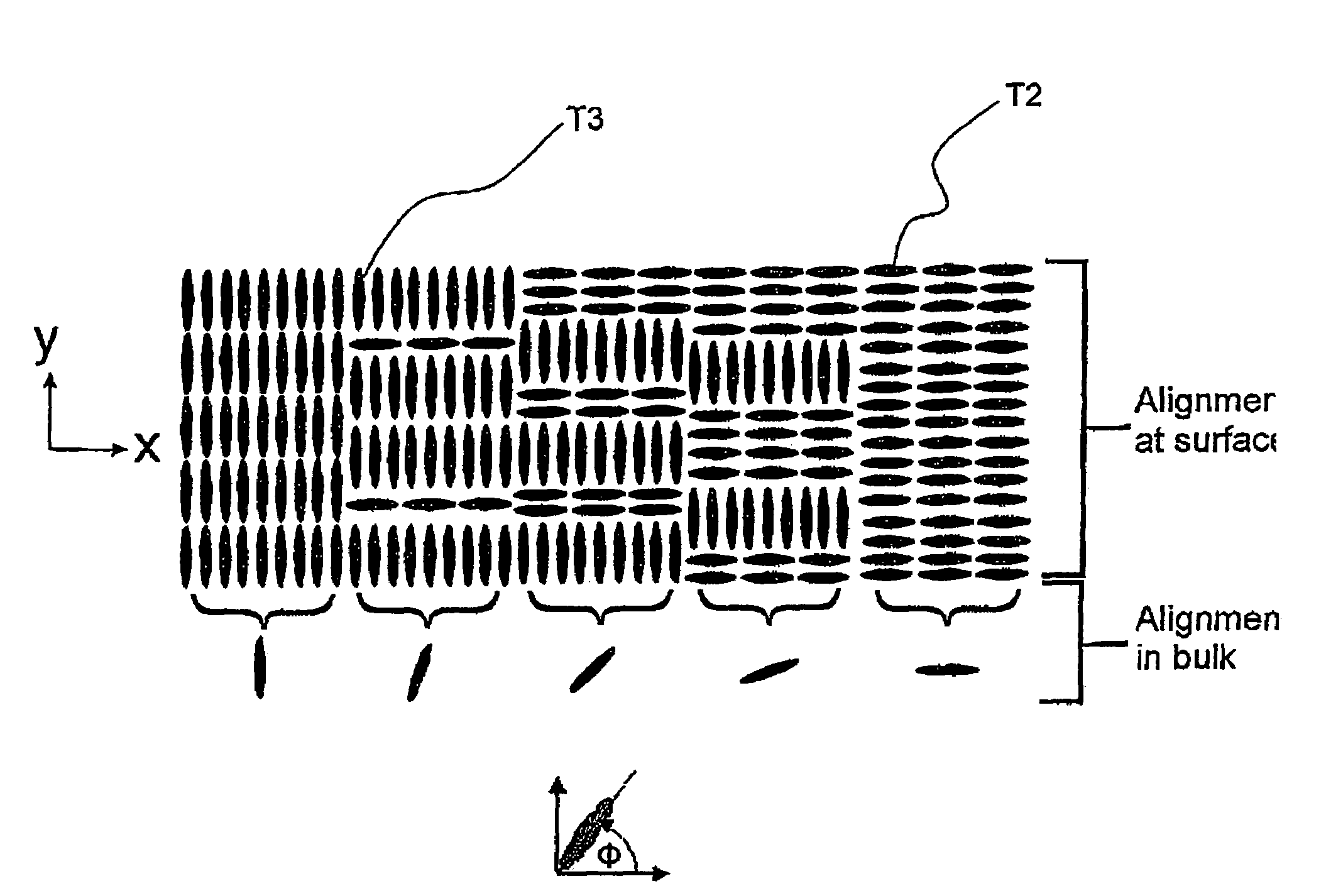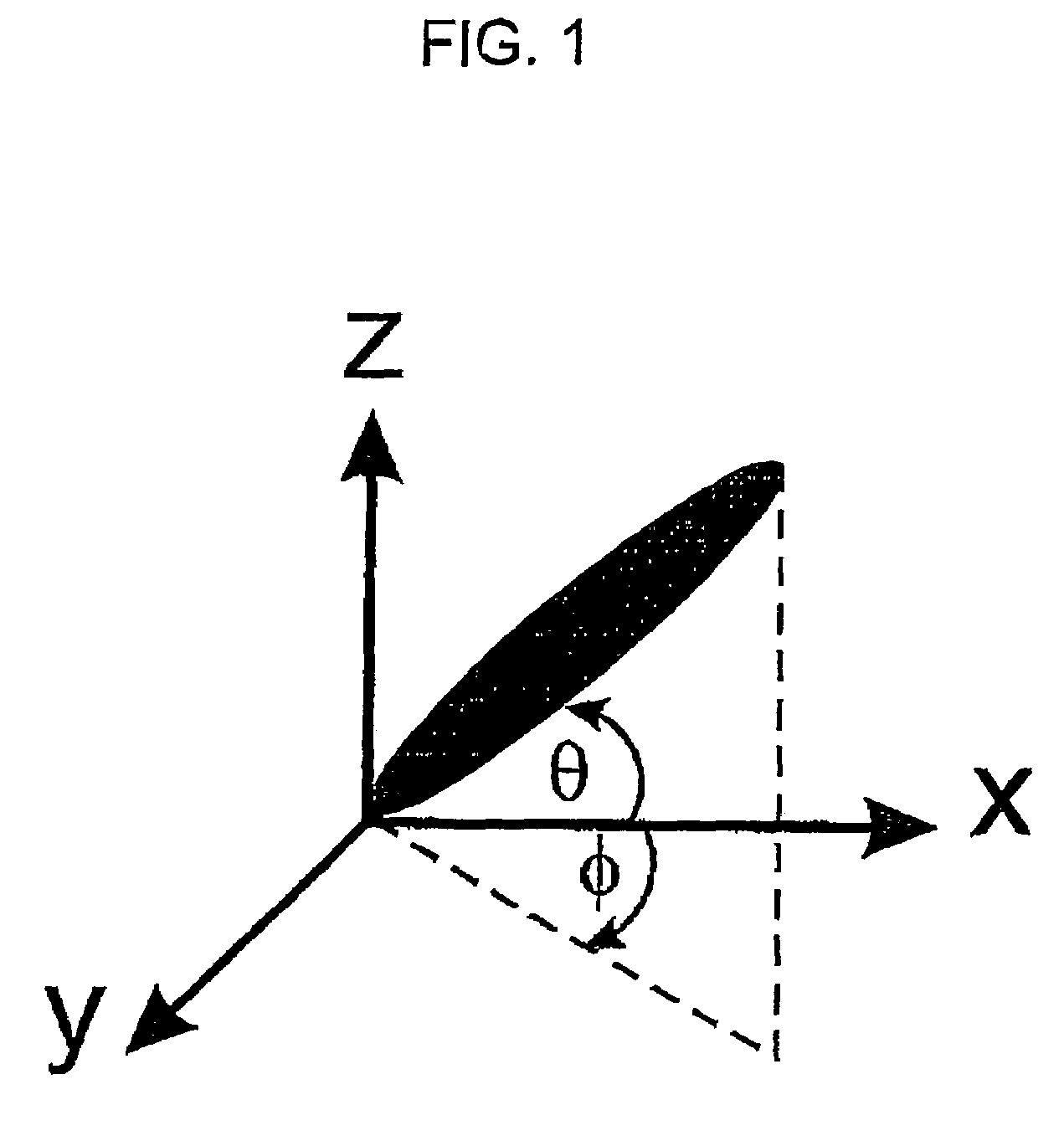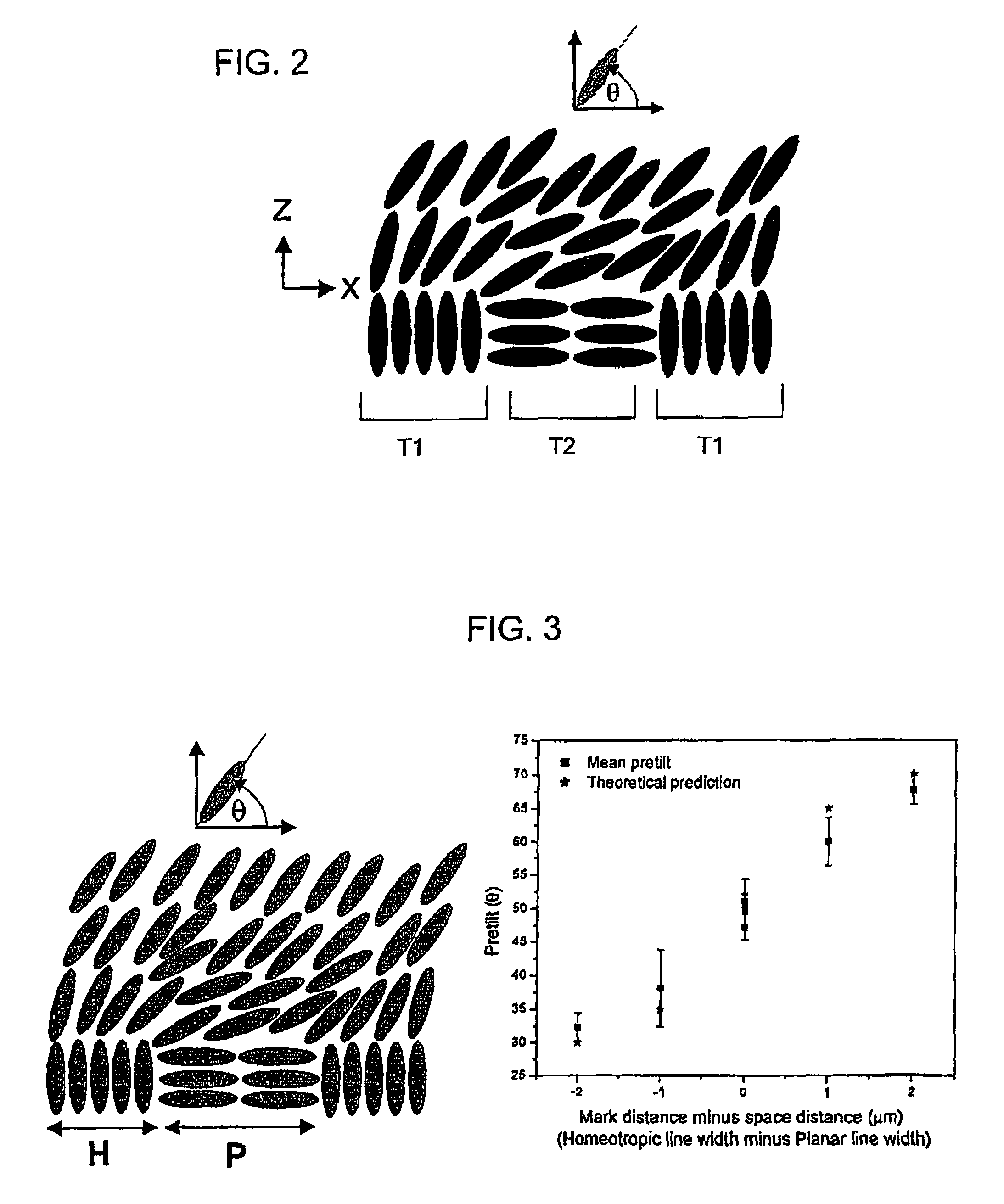Control of liquid crystal alignment in an optical device
a liquid crystal alignment and optical device technology, applied in the field of macroscopic liquid crystal alignment control, can solve the problems of not mentioning the spatially varying proportions of patterned alignment regions of kim et al, affecting the production viability of afm rubbing, and taking between 2 and 10 hours to rub an area
- Summary
- Abstract
- Description
- Claims
- Application Information
AI Technical Summary
Benefits of technology
Problems solved by technology
Method used
Image
Examples
Embodiment Construction
[0063]Before specific applications embodying the present invention are described, the general principles underlying embodiments of the present invention will first be described.
[0064]Consider a substrate that has an alignment layer that produces homeotropic alignment in its unprocessed state (i.e. LC molecular alignment is parallel with the z-axis in accordance with the coordinate system shown in FIG. 1 when the alignment layer has not been rubbed, or exposed to UV and so on). One patterned processing step can then be used to create regions of surface alignment parallel to one of the in-plane axes, say the x-axis. If a cell were to be constructed after one patterned processing step, then the bulk optic axis will lie in the x-z plane at all points within the cell (i.e. the molecular alignment has a constant value of φ at all points in the x-y plane). However, the angle that the optic axis makes with the substrate (θ) may or may not vary spatially in the x-y plane. Whether the optic a...
PUM
| Property | Measurement | Unit |
|---|---|---|
| width | aaaaa | aaaaa |
| size | aaaaa | aaaaa |
| pre-tilt angle | aaaaa | aaaaa |
Abstract
Description
Claims
Application Information
 Login to View More
Login to View More - R&D
- Intellectual Property
- Life Sciences
- Materials
- Tech Scout
- Unparalleled Data Quality
- Higher Quality Content
- 60% Fewer Hallucinations
Browse by: Latest US Patents, China's latest patents, Technical Efficacy Thesaurus, Application Domain, Technology Topic, Popular Technical Reports.
© 2025 PatSnap. All rights reserved.Legal|Privacy policy|Modern Slavery Act Transparency Statement|Sitemap|About US| Contact US: help@patsnap.com



